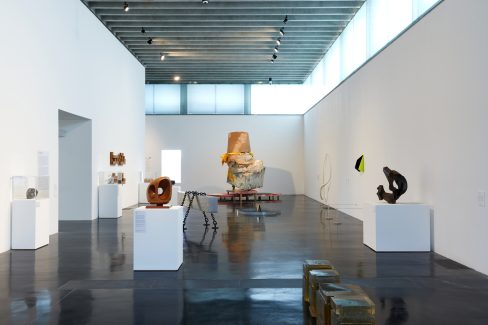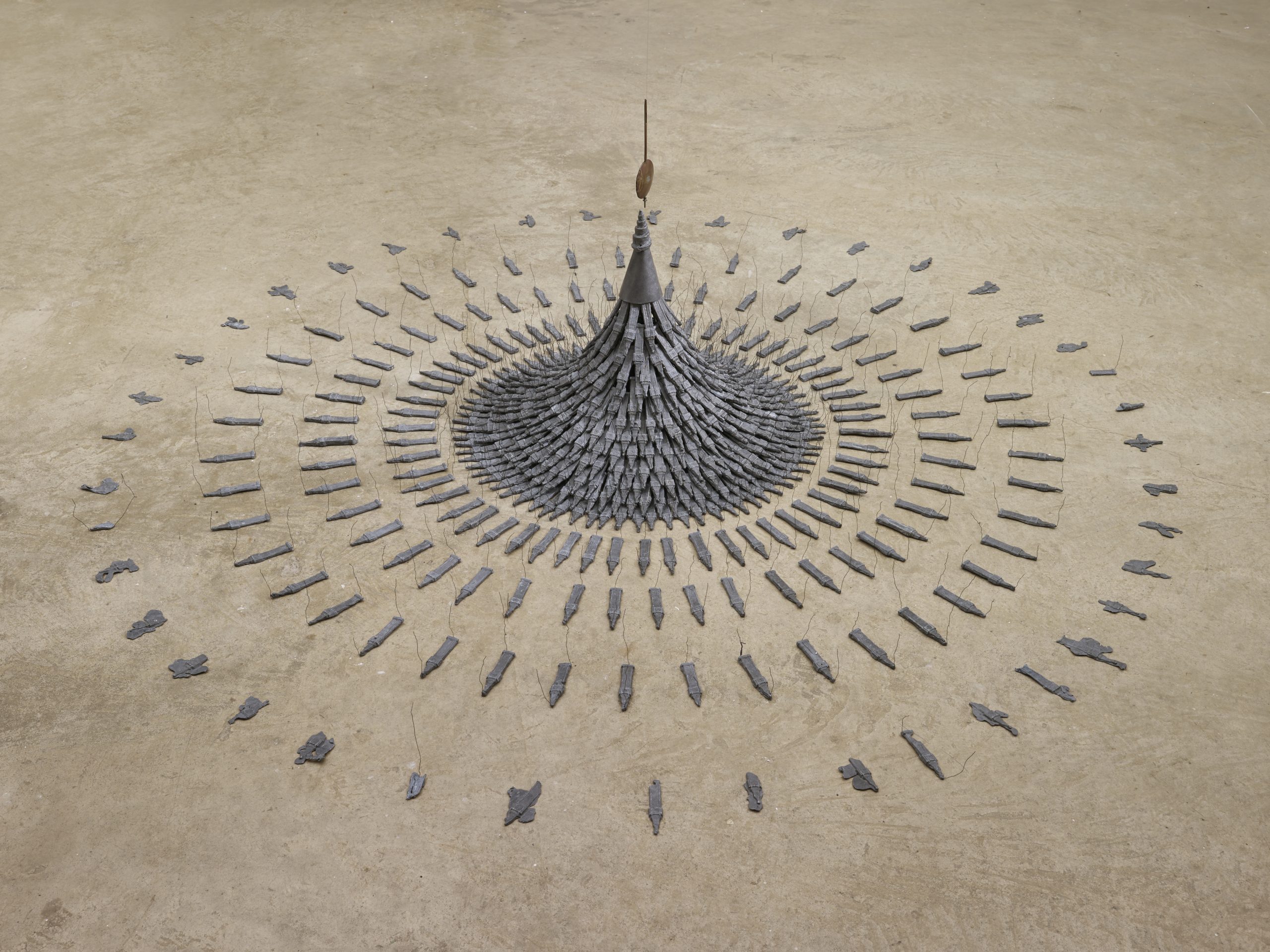Very belatedly I head to Walsall to see Breaking the Mould: Sculpture by Women Since 1945, an Arts Council exhibition which has been trundling around various galleries for the best part of two years. The New Art Gallery at Walsall, built with millennial optimism, looks and feels precarious. The asymmetric stack clad with terracotta tiles and slashed with horizontal windows seems like a giant Jenga ready to topple. The 'waterfront' square surrounding it is flanked by disused dilapidation and the canal basin features a stagnant dam of plastic bottles. Inside the place is quiet: the art library locked, the roof terrace out of bounds. Its beautifully warm and welcoming wood and very human proportions are crying out for visitors. The experience is blighted by a fear for its future.
The gallery is blessed with a tremendous permanent collection, far removed from the usual provincial museum diet of second rate 'old masters' and Victorian taste purchases. The Garman Ryan Collection is an eclectic but careful acquired selection of everything from ancient Roman fragments to Durer woodcuts and a Modigliani; it's displayed thematically in a labyrinth of small rooms you don't mind getting lost in. And at the moment it's enriched by the sub-curation, Here and Queer, subtly distinguished by rainbow labels and accompanied by a well-produced free guide which again makes me worry about expense. There is literally something for everyone here, from moments of unexpected excitement - John Wishart's Moths on a Blue Path - to familiar jolts of pleasure. Epstein's Kitty with Curls alive with earnest youth and intensity contrasts with Freud's Kitty, small and precise like an Early Renaissance profile portrait. A mean and moody Constable study; a Gericault nude, all twisting tension. A Medieval Spanish wooden Christ, arms sorrowfully outstretched; a fragmentary Roman hand. And some of them are sponsored by locals and visitors - my anxiety levels dip slightly with each lovingly personalised label.
These domestic galleries give way to more conventional high-ceiling, white cubes on the third and fourth floors and it's here that Breaking the Mould is on display. Why just women sculptors? All the usual worries about positive discrimination surface. Are visitors expected to see signs of 'woman-ness' in this work? What you actually get is a varied selection of sculpture which includes most of the big names - Hepworth, Barlow, Chadwick, Lucas, Parker - split into three not particularly enlightening themes. Formed, Found, Figured, Are we sticking to 'F' for Female'? On first sight, it is curiously bland. There is nothing very large or very controversial. Phyllida Barlow's huge rough and ready Dunce dominates one room, like an unruly gatecrasher at a cocktail party.
The most effective pieces are the most intriguing: Mona Hatoum's + and - is mesmerisng: mechanically transporting you back to the childhood pleasure of making patterns in the sand with Zen-like repetition and beauty. Sarah Collis and Wendy Taylor can't help but bring a smile with their deceptively simple 'look twice' cleverness. Cornelia Parker's Fleeing Moment seems to defy gravity and time as ever-decreasing Big Bens fan out in a frozen 'splash'. Elsewhere it is the material which triumphs: Hepworth's sleek mahogany and Lucas' stuffed tights beg you to touch. I stare at Rachel Whiteread's Untitled (6 spaces) desperate for it to wobble and wanting to lie on the floor to look into its gelatinous mystery. Jann Haworth Calendula's Cloak, a riot of colour in a space dominated by neutrals, seems a forerunner of Hew Locke's Procession: sinister, celebratory and mythic.




No comments:
Post a Comment